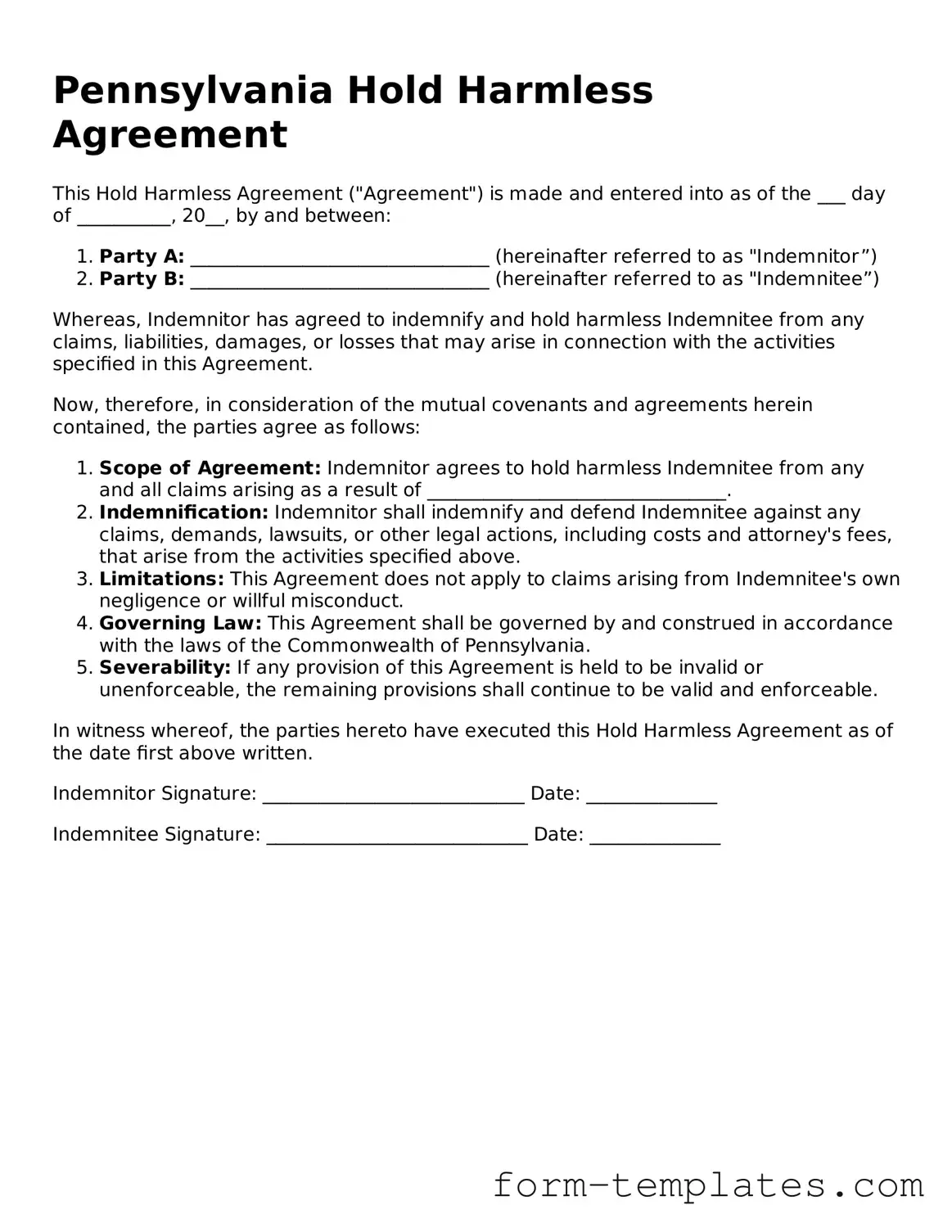What is a Hold Harmless Agreement in Pennsylvania?
A Hold Harmless Agreement is a legal document in which one party agrees to assume the liability and protect another party from any claims, damages, or losses that may arise from a specific activity or event. In Pennsylvania, these agreements are commonly used in various contexts, including rental agreements, event planning, and construction contracts.
Why would someone use a Hold Harmless Agreement?
Individuals and businesses often use Hold Harmless Agreements to mitigate risk. By signing this document, one party can shield another from legal claims that may arise from accidents or injuries related to their activities. This is particularly important in high-risk situations, such as organizing events or engaging in construction work.
Who typically signs a Hold Harmless Agreement?
Typically, two parties are involved in a Hold Harmless Agreement: the indemnitor and the indemnitee. The indemnitor is the party agreeing to take on the liability, while the indemnitee is the party being protected. For example, a property owner may require a contractor to sign a Hold Harmless Agreement before beginning work on their property.
Is a Hold Harmless Agreement legally binding in Pennsylvania?
Yes, a Hold Harmless Agreement can be legally binding in Pennsylvania, provided it meets certain criteria. The agreement must be clear, specific, and voluntarily signed by both parties. However, courts may scrutinize these agreements, especially if they attempt to waive liability for gross negligence or intentional misconduct.
Are there any limitations to Hold Harmless Agreements?
Yes, there are limitations. While these agreements can protect against many types of claims, they cannot absolve a party from liability for gross negligence or willful misconduct. Furthermore, certain statutory limitations may apply, depending on the nature of the activity involved.
Can a Hold Harmless Agreement be revoked?
Generally, a Hold Harmless Agreement cannot be revoked unilaterally once it has been signed. However, if both parties agree, they can modify or terminate the agreement. It is advisable to document any changes in writing to avoid future disputes.
What should be included in a Hold Harmless Agreement?
A comprehensive Hold Harmless Agreement should include the following elements:
-
The names and contact information of both parties.
-
A clear description of the activity or event covered by the agreement.
-
Specific language outlining the indemnification obligations.
-
Any limitations or exclusions of liability.
-
The signatures of both parties, along with the date of signing.
Do I need a lawyer to create a Hold Harmless Agreement?
While it is possible to draft a Hold Harmless Agreement without legal assistance, consulting a lawyer is highly recommended. An attorney can ensure that the agreement complies with Pennsylvania law and adequately protects your interests.
How can I enforce a Hold Harmless Agreement?
To enforce a Hold Harmless Agreement, the injured party must demonstrate that the agreement is valid and that the other party failed to uphold their obligations. This may involve providing evidence of the agreement and any claims or damages incurred. If disputes arise, legal action may be necessary to resolve the issue.
Where can I find a template for a Hold Harmless Agreement?
Templates for Hold Harmless Agreements can be found online through various legal resources. However, it is crucial to ensure that any template used is tailored to Pennsylvania law and the specific circumstances of your situation. Customizing the agreement with the help of a legal professional is often the best approach.
